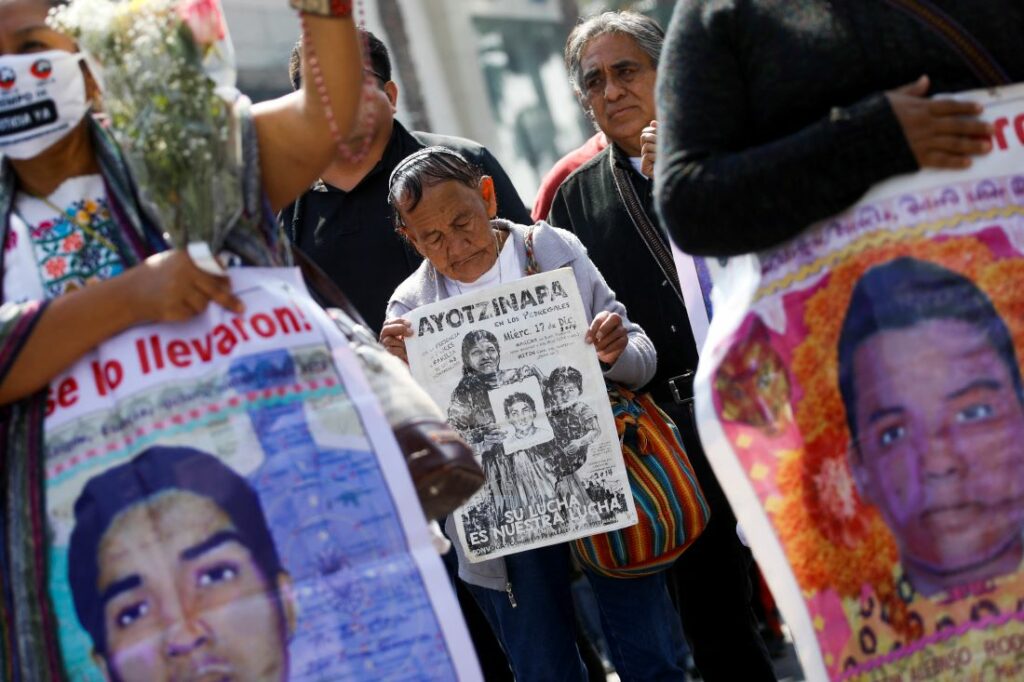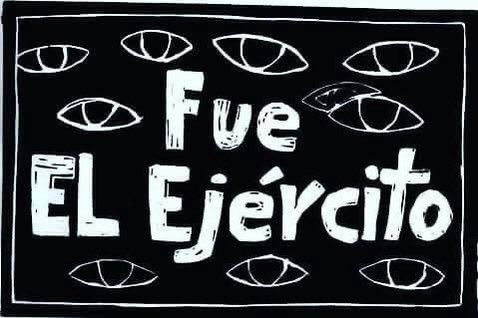
Luis Hernández Navarro
Julio Cesar Lopez Patolzin was so thin that he was nicknamed El Tribi. He was just 25 years old when he was disappeared on September 26, 2014. He worked as a blacksmith, driver and farmer. Three times he tried to enroll to study at the Normal Rural Raúl Isidro Burgos in Ayotzinapa. He had no luck. The fourth time he made it.
So much insistence on studying to become a rural teacher did not come from an irresistible vocation for teaching, but from something simpler: he was an Army OBI (information-seeking body), under the guise of a student, that is, a spy who had to infiltrate Ayotzinapa, until he finally succeeded. According to information from the then commander of the 35th Military Zone in Chilpancingo, Major General Alejandro Saavedra Hernandez, the soldier Lopez Patolzin was in charge of sending the information obtained, by means of messages and phone calls sporadiclly, whenever the situation allowed him to do so.
OBI López Patolzin joined the 50th Infantry Battalion in Chilpancingo on January 16, 2009. He served for five years and eight months.
According to Alejandro Encinas, Undersecretary of the Interior, despite the fact that he disappeared while on official duty, the armed forces did not activate the search protocol for military personnel. They never made any effort to bring him to safety. They abandoned one of their own. Had they done so, perhaps the story would have been different.
The presence of López Patolzin in the rural teacher training college was not an initiative of an isolated military command, but a policy of the military institution. It was part of the counterinsurgency strategy of the armed forces against the school. So much so that, in addition to Julio Cesar, the Army had more infiltrators among the students or in their immediate environment. Thanks to these spies and their intelligence services, acting authorities at different levels knew at all times what happened to the 43 normalistas of Ayotzinapa, but hid and manipulated the information.
According to the Interdisciplinary Group of Independent Experts (GIEI), the activities carried out by López Patolzin at the school since 2012 consisted of reporting what happened in the assemblies held at the school; following up on marches, rallies and any movement that the students carried out in the state of Guerrero or outside the state; and detecting links with members of subversive organizations, organized crime groups and any movement that put domestic security and national security at risk.
What did Private López Patolzin say in his last reports to his superiors? Neither the parents of the disappeared nor the GIEI have been able to find out because the Army refuses to provide this information. Knowing it would be relevant to know the whereabouts of the 43.
Another Julio César, also a student from Ayotzinapa but surnamed Mondragón, was not disappeared. He was one of the three normalistas killed on the night of September 26. But, in addition, horror upon horror, he was savagely tortured and murdered. His face was flayed. His mutilated body was found dumped on a street in Iguala on September 27. Curiously, there are three different official versions of what happened to this young man.
According to the former Attorney General’s Office, directed by Jesus Murillo Karam, an anonymous call alerted that there was a lifeless body in the industrial zone of El Andariego. Personnel from the 41st Infantry Battalion found the deceased Julio Cesar at 8:30 in the morning.
But, according to the GIEI, there are two other accounts of how the body was found, both from the Army. In the first, a reaction force from Battalion 27 received a call to C4 and went looking for the body at 10:20 in the morning. In the other, the Sedena human rights official documents the discovery of a lifeless male body near the town of Mexcaltepec, near Taxco, by the 35th Military Zone.
Julio Cesar’s cell phone was not found on his body, but was active after his death. The GIEI requested the sheet with the calls from the phone line, but it was never delivered.
These are not the only facts that the Army has failed to report or misreported. According to the experts, the documentation delivered, to this day, is partial and corroborates the existence of other information about the time of the events and later dates, in which there is data on detention and transfer of normalistas, so we have insisted that it should be made available to the investigation and the search for the young people. However, the GIEI has been met with a negative response from the institutions, despite the existing evidence. It is on that evidence that progress needs to be made.
Beyond the progress made in the investigations and the arrests made, we are still far from knowing the truth in depth and that full justice has been done. It is certainly relevant that the Undersecretary of the Interior describes the barbarity perpetrated as a State crime, but it is insufficient to close the case.
A crime against humanity such as this one challenges both the State and society as a whole. It is an open wound that has not healed and that damages the country as a whole. For it to heal, the archives must be fully opened, the investigation must continue and justice must be done. Nine years later, the parents of the young people who disappeared in Iguala are our great civic heroes. Their tenacity, commitment and dignity are an example to follow.

Original text published in La Jornada on September 26th, 2023. https://www.jornada.com.mx/2023/09/26/opinion/019a1pol
English translation by Schools for Chiapas.
